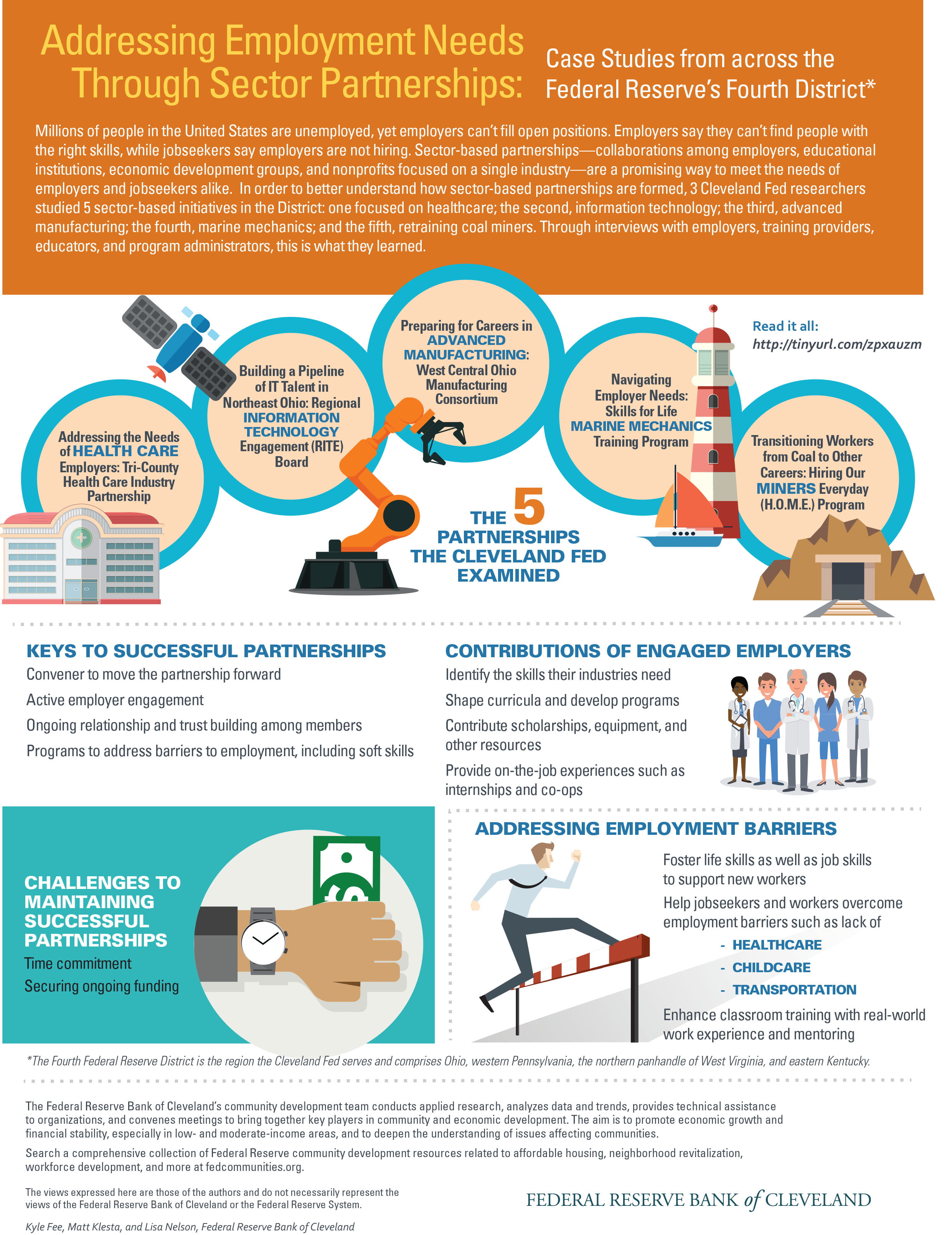- Share
Addressing Employment Needs through Sector Partnerships: Case studies from across the Federal Reserve's Fourth District
Sector-based partnerships come in many forms and structures. While they differ in goals and in how they operate, these partnerships typically involve employers from a particular industry collaborating with representatives from local and regional economic development offices, educational institutions, and nonprofits that serve individuals seeking employment in order to meet the needs of jobseekers, the industry, and the region’s economy. And these partnerships appear to be working: Evaluations of sector-based training programs have identified successful outcomes for both workers and employers in the form of increased wages, reductions in turnover, and increased productivity.
The views expressed in this report are those of the author(s) and are not necessarily those of the Federal Reserve Bank of Cleveland or the Board of Governors of the Federal Reserve System.
In 2015, the Cleveland Fed’s Community Development Department sought to identify a number of sector-based partnerships in the Fourth Federal Reserve District—comprising all of Ohio, western Pennsylvania, eastern Kentucky, and the panhandle of West Virginia—for review. We chose five, each of which is profiled in Addressing Employment Needs through Sector Partnerships: Case studies from across the Federal Reserve’s Fourth District.
Beyond the distinctions among the examples, we found important similarities across the five initiatives. The first, and probably most important, is active and substantive employer engagement. Another common essential element is relationship and trust building among employers and across partners, which helps dispel the concerns of working alongside competitors and yields the highest level of alignment in order to deliver quality training and services. Our case studies also suggest a strong intermediary can do a lot to promote relationship and trust building. Finally, each of our five case studies points to the incalculable value of employees’ having soft skills in addition to the appropriate technical skills. A jobseeker’s lack of soft skills can be a significant barrier to employment despite his or her possessing the technical requirements for a position.
While sector-based initiatives have been around for decades, the recent Workforce Innovation and Opportunity Act places a renewed emphasis on these strategies as a means to effectively align education and job training with employer needs. The case studies we present here are examples of sector partnerships that coalesced out of need and that continue because the partners have found a way to accomplish that alignment.
Download the full report here
Download individual case studies:
- Case Study 1 — Addressing the Needs of Health Care Employers: Tri-County Health Care Industry Partnership
- Case Study 2 — Building a Pipeline of IT Talent in Northeast Ohio: Regional Information Technology Engagement (RITE) Board
- Case Study 3 — Preparing for Careers in Advanced Manufacturing: West Central Ohio Manufacturing Consortium
- Case Study 4 — Navigating Employer Needs: Skills for Life Marine Mechanics Training Program
- Case Study 5 — Transitioning Workers from Coal to Other Careers: Hiring Our Miners Everyday (HOME) Program





